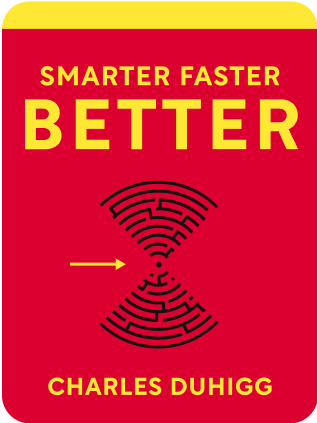

This article is an excerpt from the Shortform book guide to "Smarter Faster Better" by Charles Duhigg. Shortform has the world's best summaries and analyses of books you should be reading.
Like this article? Sign up for a free trial here .
Have you heard of the Bayesian approach? Do you know how it can result in making smart decisions?
The Bayesian approach, also known as Bayesian cognition, involves using assumptions based on your experience of the world to accurately predict outcomes. You may already be using the Bayesian approach without even realizing it. Sharpen this skill to make smart decisions.
Read more to learn about Bayesian cognition.
What Is the Bayesian Approach?
The Bayesian approach (Bayesian cognition) involves using your assumptions about the world and how it operates to make accurate predictions. Your brain forms these assumptions based on experiences that you internalize and patterns that you notice. When you’re faced with a situation that seems to fit a previously observed pattern, you can apply your assumptions to predict, hopefully accurately, how this situation will progress.
It’s important to note that Bayesian cognition only helps to make your predictions more accurate if your assumptions are accurate. If you base a prediction on a flawed assumption, it follows that the prediction will be flawed, too.
For example, a study required a group of students to predict how much longer an Ancient Egyptian pharaoh would rule if he’d already been on the throne for 11 years. Many students assumed that a pharaoh’s lifespan—and therefore his total time on the throne—would follow the same pattern as the lifespan of a European king from a later period. However, this assumption was flawed. In reality, pharaohs had much lower life expectancies than these kings. Therefore, their rules were much shorter. The students’ incorrect assumption led to bad predictions: They predicted that the pharaoh would rule for on average another 23 years. Meanwhile, the data suggested that he would only rule for another 12 years.
You can increase the accuracy of your assumptions by seeking out as much information about the world as possible. In particular, you should make sure to look out for examples of failure. The brain tends to ignore information about how we and others have failed, and it instead focuses on examples of success. This can lead to your assumptions being unrealistically skewed towards success. You need to actively work to counterbalance this cognitive bias if you want your assumptions, and therefore your predictions, to be accurate.
Benefits of the Bayesian Approach
Proponents of the Bayesian approach believe that we can predict the future fairly accurately if we make assumptions based on previously observed patterns and information. For example, if you’re asked to predict how much longer a 50-year-old person will live, you can make an assumption based on life expectancy patterns.
You may already be using Bayesian cognition without even realizing it. The brain constantly gathers data about patterns that exist in the world around you. It uses this data to form assumptions about how the world works. It then instinctively applies these assumptions when it’s time for you to make a prediction.
Forming accurate assumptions about the world and how it operates can help to make your probabilistic thinking more reliable. You may be able to instinctively tell how likely a particular outcome is based on situations and patterns you’ve observed in the past. However, the crucial word here is “accurate.” You need to make sure that your assumptions are correct. If they’re not, issues with Bayesian thinking can arise. If you start out with faulty assumptions about the world, any predictions you make based on these assumptions will be inaccurate.
(Shortform note: To learn more about Bayesian cognition, probabilistic thinking, and making smart decisions, read our summary of Thinking, Fast and Slow.)
Example: An Experiment on Bayesian Cognition
In the 1990s, professors at the Massachusetts Institute of Technology conducted a study on how people are able to make predictions when they have limited data on a topic. They asked students to make predictions based on one small piece of information—for instance, asking how much longer a U.S. congressman will serve if he’s already served for 15 years. The situations that the students were asked to predict predominantly followed strict patterns. However, the students weren’t given information about these patterns in advance.
The study found that a lot of the time, the students’ predictions were spookily accurate. In some cases, they made predictions that were within 10% of what the data indicated was the “correct” answer. The students couldn’t always explain why they’d made these accurate predictions; they often claimed that their answer had just “felt” right. They’d intuitively used their prior assumptions and knowledge to come to the right conclusion. This was strong Bayesian cognition in action.
However, there was one situation in which the students failed to predict the answer accurately.
They were asked to predict the total reign of a pharaoh in Ancient Egypt if he’d already ruled for 11 years. The students predicted that the pharaoh would rule for on average another 23 years. However, the data suggested that the pharaoh would only rule for another 12 years.
The students were unable to predict this answer correctly because they’d begun with a faulty assumption. They’d based their predictions on the assumption that a pharaoh’s lifespan—and therefore his total time on the throne—would follow the same pattern as the lifespan of a European king from a later period. These kings tended to survive until they were elderly if they made it past middle age, leading to a lengthy reign.
However, the students were missing a key piece of information. They didn’t realize that in the time of the pharaohs, people generally had much lower life expectancies compared to the kings of later eras. For this reason, the average length of time a pharaoh spent as a ruler was significantly shorter than that of European kings. Because they didn’t have this information, the students were unable to make an accurate prediction. They were unable to apply the Bayesian approach effectively.
How Can We Ensure Our Assumptions Are Accurate?
To ensure that your assumptions are accurate, you need to take in as much information about the world as possible. You should seek out experiences and perspectives that will widen your knowledge of the patterns that surround you.
Easy, right? Unfortunately, not quite. To make sure you take in the right kind of information, you need to be aware of certain biases that the brain has when it comes to the information it seeks out.
A major example of such a cognitive bias is the way we internalize success and failure. Our minds tend to place greater importance on times we’ve succeeded than on times we’ve failed. Sometimes, we omit failures from our memory entirely. For this reason, we tend to have an inflated view of the odds of success and forget to factor in the likelihood of failure. As a result, our assumptions become inaccurate. We end up predicting success too often.
To counteract this, we need to actively search for information on times we and others have failed. We should build up a picture of the factors that can increase the likelihood of failure, where we and others have gone wrong in the past, and why these failures occurred. It’s not fun to contemplate why you’ve failed, or to ask others why they’ve failed. But, it’s necessary in order to improve your likelihood of making smart decisions in the future.
Another way to strengthen your assumptions is to consider situations in which you were certain things would turn out one way but were ultimately proved wrong. Why were your Bayesian instincts so incorrect? Did you work on a faulty assumption? What information do you need to seek out to stop this from happening again?
Example: Probabilistic Thinking and the Bayesian Approach in Poker
Poker is all about making predictions; predicting what cards are going to come up, and what your opponents are going to do. Players can strengthen these predictions by using probabilistic thinking and Bayesian cognition.
Probabilistic Thinking
In the 2004 Tournament of Champions, former psychology student Annie Duke was up against some of the world’s best poker players, including Greg “the FossilMan” Rayner. In a crucial turn, Rayner pushed all of his chips into the pot. This suggested he had a very strong hand. Duke needed to decide whether she should match this bet, or fold.
Duke thought of all of the possible futures that could come from this hand and the variables that affected these futures’ odds. Duke had a fairly strong hand. If this hand turned out to be stronger than Rayner’s, she could end up winning big and becoming the frontrunner of the tournament.
However, Rayner could have a stronger hand than she did. If Duke matched Rayner’s bet in this scenario, she would end up losing everything and being knocked out of the tournament. If Duke folded, she would lose a lot of the progress she’d made in this game, but would be able to carry on in the tournament.
Ultimately, Duke needed to figure out how likely it was that Rayner had a strong hand. Rayner could be bluffing and actually have a terrible hand. He could have gone all-in simply to scare Duke off and encourage her to fold, knowing that this was the only way he’d emerge from the round victorious. Or, Rayner could genuinely have a strong hand. He could have gone all-in because he’d confidently predicted that he would beat Duke.
Throughout the tournament, Rayner had proven to be a very rational player. He’d never gone all-in without having a good reason to do so. Based on this, Duke theorized that it was most likely that he’d bet as if he had a strong hand because he actually did have a strong hand. He wasn’t bluffing or taking a massive risk; he was acting rationally based on the hand he’d been dealt.
Duke folded. Later, Rayner told her that she’d made the right choice; he’d had a stronger hand than she did.
Bayesian Cognition
Probabilistic thinking isn’t the only cognitive approach that can help you in poker. The Bayesian approach can come in handy, too.
According to Annie Duke, observing certain traits about your opponent can help you to make Bayesian assumptions about how they’ll play. For instance, Duke’s experience has taught her that 40-year-old businessmen usually only care about the prestige that comes with playing poker against experts; they don’t actually care about winning. Because of this, they’re likely to take a lot of risks. Using this assumption, Duke can make strong predictions about how a game against someone in this demographic will pan out and play in a way that maximizes her chances of winning.
However, for Duke, coming up with these initial assumptions isn’t enough. She updates her assumptions as she begins to observe how her opponents actually play. For instance, she may find that a 40-year-old businessman is able to make excellent bluffs. This would suggest that he is a cautious and skilled player after all, and that she shouldn’t underestimate him. Duke wants to keep her assumptions as accurate as possible so that her predictions regarding her opponents’ actions remain accurate, too.
Is the Bayesian approach in your cognitive toolbox? The more you use it, the more you’ll be able to make smart decisions.

———End of Preview———
Like what you just read? Read the rest of the world's best book summary and analysis of Charles Duhigg's "Smarter Faster Better" at Shortform .
Here's what you'll find in our full Smarter Faster Better summary :
- Why becoming more productive isn’t about working longer hours or constantly pushing yourself to do more
- The 8 principles for improving productivity
- How to create a work culture in which each employee is truly valued






